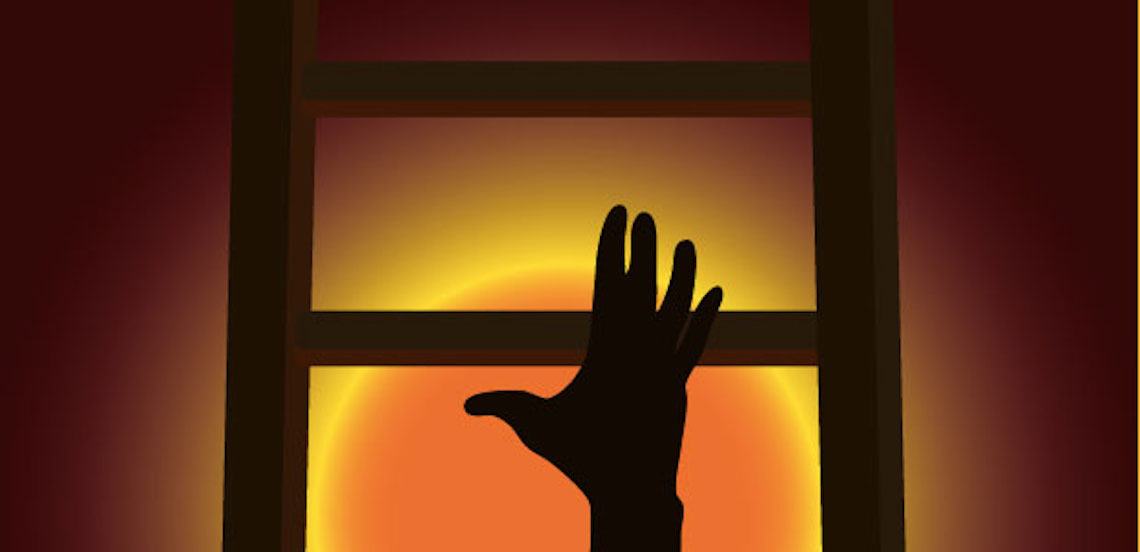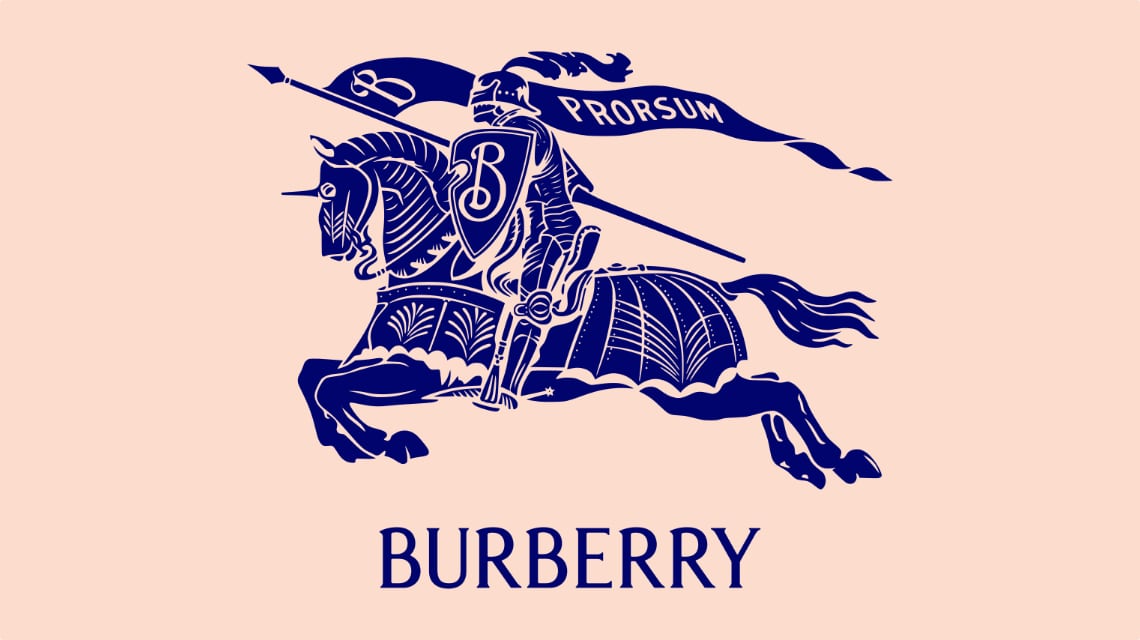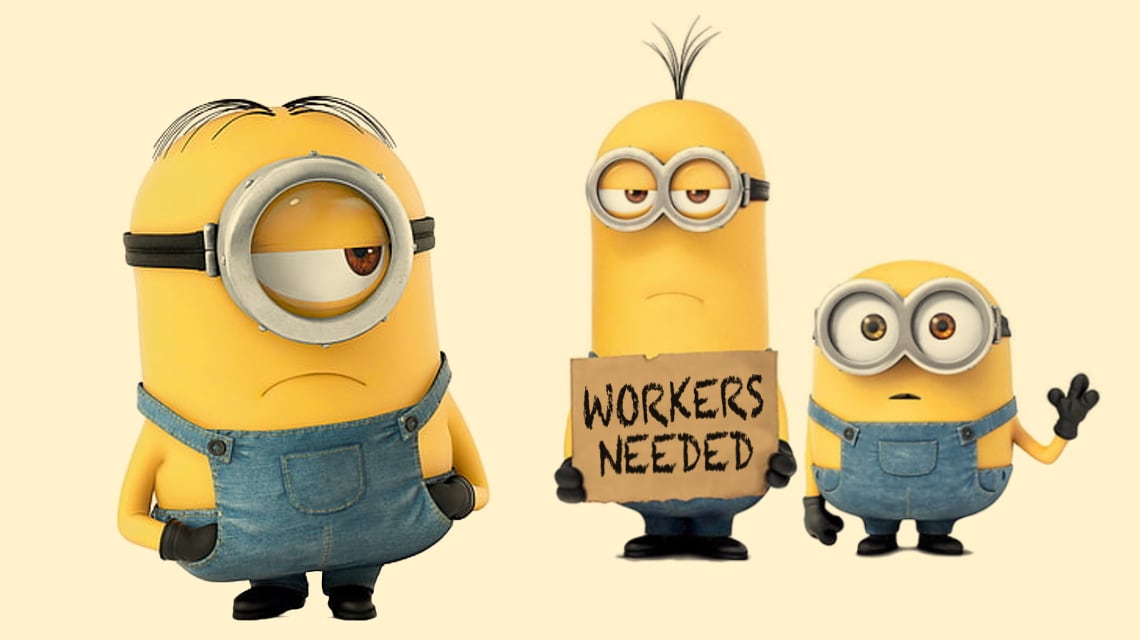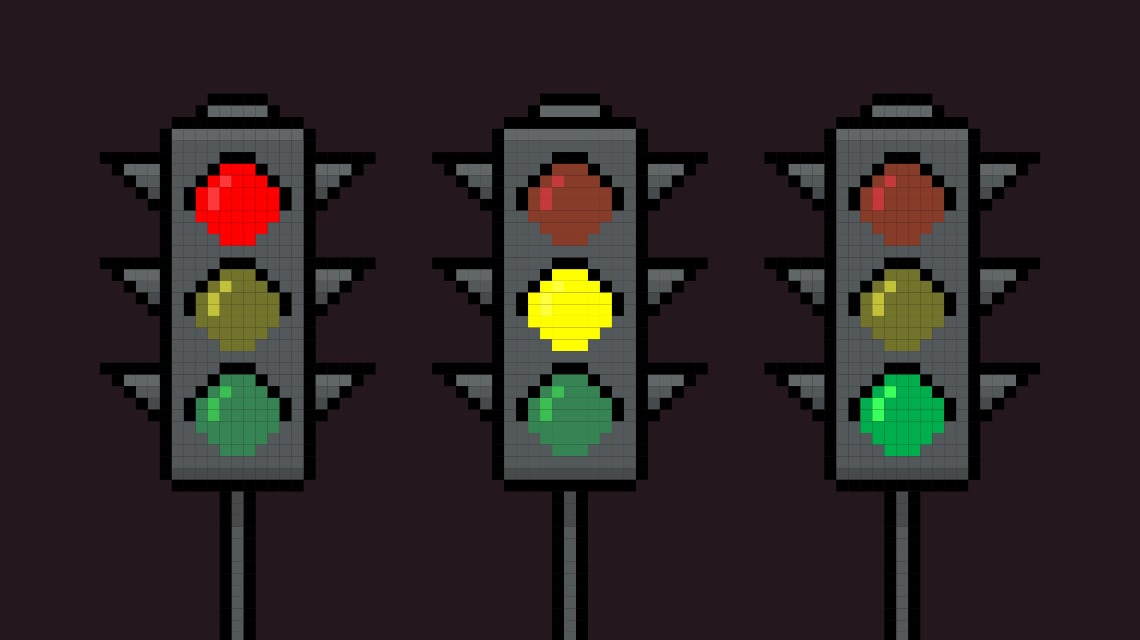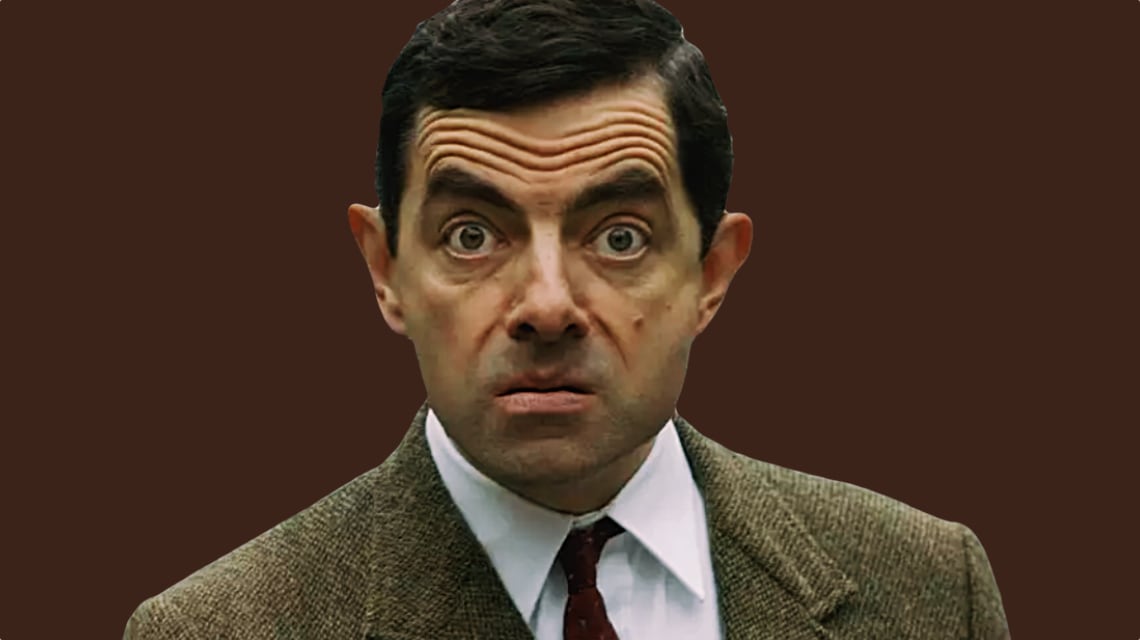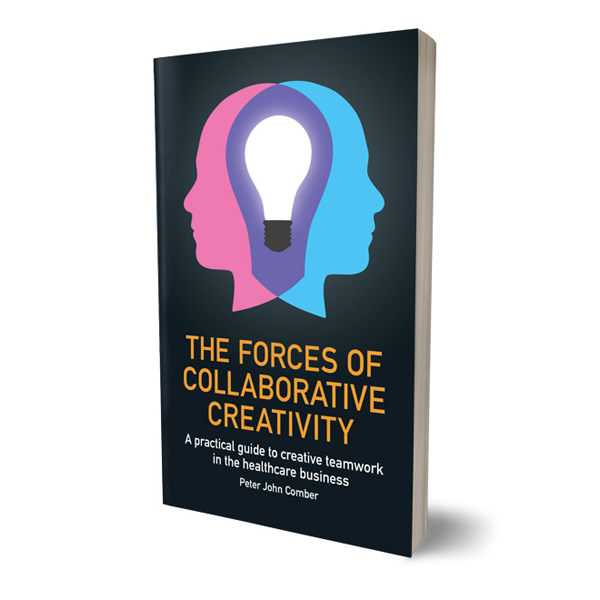The ambitions of Creative Commitment.
I witnessed the live presentation of the Creative Effectiveness ladder and oh, what a beautifully quixotic thing it is.
Cannes Lions’ Festival of Creativity, began yesterday and the weather in Cannes is lovely - I know because I Googled it. Yes, this year the circus is online and Lions Live, the greatest advertising (Google-streamed) show on earth, has all the usual acrobats, clowns and tightrope walkers.
One of the openers was an ambitious and worthy number called “All aboard the Creative Effectiveness ladder.” This was presented by the most excellent Peter Field and someone new to me called James Hurman on behalf of Cannes Lions and WARC.
Brand activities and their effectiveness are placed on the ladder based on their level of ‘Creative Commitment’. The higher the level of Creative Commitment the higher the effectiveness and the higher up the ladder you are. So what, you ask, is Creative Commitment?
In the words of the authors: “Creative Commitment is a composite measure of the media budget, duration and number of media channels applied to a creative campaign or initiative. Creative Commitment correlates very tightly with effectiveness – as Creative Commitment increases so does effectiveness.”
I’m vaguely annoyed that the definition of Creative Commitment is devoid of any mention of creativity and evidently I’m not alone because shortly after we are helpfully informed that: “Creativity is a fourth and highly impactful lever – creatively awarded campaigns are much more effective overall, and at every level of Creative Commitment.”
This phrase seems to imply that a campaign isn’t creative unless it has won awards (Lion shaped awards) but actually only reflects the data sets that support the theories: “We have analysed and compared a total of 4,863 effectiveness award entrants and winners from 2011 through 2019, from every major market in the world: 1,031 cases from the Cannes Creative Effectiveness Lions database, 3,616 cases from the WARC database and 216 cases from the IPA databank.”
Center stage, bathed in spotlights is The Creative Effectiveness Ladder with six steps. These six steps represent the types of effects that creative marketing produces and orders them from least to most commercially impactful.
The following descriptions are gross simplifications, I strongly advise that you study the full documentation which can be downloaded here >>>
The first step on the Ladder is called INFLUENTIAL IDEA: “Influential Idea campaigns use creativity to
maximise engagement and sharing, resulting in the campaign over-achieving on campaign metrics and media efficiency.”
Doesn’t sound too bad. Realistically this is what most brands today consider ‘good’ advertising and it’s the bottom of the ladder. Creativity driven (the good old ‘fourth lever’) the ‘big idea’ is the star of this lowly rung. The most common lead media are online video, television and social media.
The next step is BEHAVIOUR BREAKTHROUGH: “Behaviour Breakthrough campaigns use creativity
to change the purchase behaviour of customers – or to change other forms of behaviour relevant to
the success of the brand.”
This is market shaping. Strategy and opportunity-driven. The most common lead media are television, online video and social media. Really worthy work, but very hard and temporary (either it works and you eventually move on or it fails and you give up).
Followed by SALES SPIKE: “Sales Spike campaigns use creativity to create short-term, temporary growth in sales, market share or profitability for a brand.”
As the name indicates this is hard sales promotion. This is job-security driven (marketing managers, agencies, media partners, et al.). The most common lead media are online video, social media and events & experiential.
Half-way up the ladder, the knives come out: “Across the last decade, we’ve seen substantial growth in campaigns seeking to achieve short-term and temporary sales effects (From 2010-2014, 25% of effectiveness cases were short-term campaigns running for under three months). From 2015-2019 this percentage grew to 34%… We’re also seeing a pernicious trend toward short-termism due to budgets being fragmented or constrained, or to satisfy marketers’ need to meet quarterly reporting cycles.”
Makes you wonder why this is on the third rung, then you remember, this is based on effectiveness data, dammit.
On the fourth rung, you get the impression that your head is now poking out of the smog, smell and clamour and breathing the purer air of the BRAND BUILDER: “Brand Builder campaigns use creativity to improve the fundamental measures of brand health – including awareness, consideration, preference, purchase intent and image attribute ownership.”
This is focused on brand health. This is driven by those who believe in brand value and the medium long-term advantages it provides and who are fortunate enough to work for organisations who share those views. The most common lead media are television, online video and social media.
A brand is a competitive advantage, if you don’t build it you don’t have an advantage. Simple as that.
Near the top the ladder sways gently as you reach for COMMERCIAL TRIUMPH: “Commercial Triumph campaigns use creativity to profitably increase sales and market share beyond a single quarter or beyond the duration of the campaign.”
This is called reaping the benefits of brand health. This is driven by those with a secure position as: “Sustained sales metrics cannot be assessed within a short-term window. Aim for a window of six to 18 months to prove a sustained commercial performance.”
The most common lead media are online video, television and social media. If a sales spike lasts long enough it’s a commercial triumph.
The highest rung is ENDURING ICON: “Enduring Icon campaigns use creativity to drive brand and sales growth consistently over a long period of three years or more. They stick with the same creative strategy or creative work throughout that period, creating sustained commercial outcomes.”
This is brand nirvana. Driven by divine intervention because as the authors note: “With average marketing tenures ranging in the order of 12-24 months, this normally means creating work that will outlive your time with a brand. Or arriving in a new job and resisting the temptation to chuck it all and start again on fresh work of your making.”
The most common lead media is television (87.5%). Compared to an average person I am overly aware of and interested in advertising, yet while I can remember numerous ‘enduring icon campaigns’ from previous decades I can’t think of a single one from the last decade. The top rung is a desolate place.
I stand and I applaud Peter Field, James Hurman, Cannes Lions and WARC. Their exhibition was brave. To attempt the impossible is always admirable. I wish them well if they succeed the field of advertising will improve for those who invest in it, those who actuate it and those who view it.
As they and their ideas leave the circus tent they are like gladiators entering the arena, I salute them. Aware that their fate depends upon a thumbs up or thumbs down from the expensive seats.
They fight bravely and convincingly: “Yet as the evidence piles up, the value of marketing seems to be more in question than ever. The 2010’s, a decade characterised by one of the longest and most stable periods of global economic growth in history, was paradoxically also a decade of ever-decreasing budgets being carved up into ever-smaller increments, fought over by struggling agencies playing jump ball for projects with slim-to-none margins.”
Their attacks are, at times, devastating: “However, most marketing mix modelling these days looks only at short-term impacts, especially ROI. The effect of this modelling on marketing practice has been both damaging and sinister. Businesses, and therefore marketers and their agencies, have become over-focused on ROI in recent years, especially the very short-term measures of ROI that are derived from Big Data. ROI is an efficiency metric, measuring the ratio of profit growth to the cost incurred in generating it. So, if we want to maximise ROI, we have two choices: maximise profit growth (difficult) or minimise investment (much easier). Endless pressure to maximise ROI has beaten marketers into an advertising model that many know to be unwise, of low Creative Commitment: spend little on a brief ‘spike’ generating activity (we cannot really regard these as campaigns) and the short-term ROI will be impressive. So what if the sales impact evaporates within days, or if long-term growth will be anaemic at best? The ROI numbers will keep the CFO off our backs. Mediocre growth at minute cost equals magnificent ROI.
The impact on Creative Commitment of an obsession with ROI is very clearly shown in the IPA data. The
campaigns that deliver the highest ROIs (by a long way) are low Creative Commitment ones – the very
ones that underperform on almost every other business measure.”
“So it is hardly surprising that a new generation of marketers and agency people have emerged that reject the old high Creative Commitment model – it doesn’t put bread on the table if you are rewarded for ROI.”
It is cruelly ironic that the concept of Creative Commitment is only an INFLUENTIAL IDEA and that the campaign mission these fine people are on is to achieve a BEHAVIOUR BREAKTHROUGH in how companies measure and therefore comprehend brand performance. Let’s hope they manage to climb their ladder and establish Creative Commitment as an ENDURING ICON.
The last words are theirs: “Our guidance to marketers is to work to reverse this decline [of Creative Commitment] – and, where competitors are slow to do so, gain an advantage by increasing Creative Commitment as quickly as possible.”
